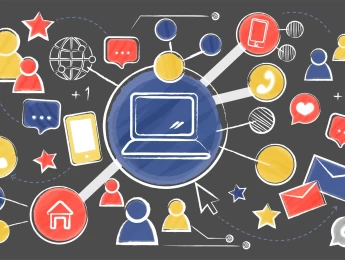- Table of Contents
- Introduction
- What Is Empathetic Leadership?
- What Does Empathy Actually Mean?
- Why Is Empathy Important in Leadership?
- Empathetic Leadership Supports Innovation
- The Importance of Psychological Safety in the Workplace
- How to Receive Empathy from Others as a Leader
- How to Be More Empathetic As a Leader
- Active Listening
- Seek Diverse Perspectives
- Practise Empathetic Communication
- Show Appreciation
- Develop Emotional Intelligence
- Lead by Example
- Invest in Relationships
- Continuous Learning
- Developing an Empathetic Leadership Voice
- Authenticity
- Tone and Body Language
- Empathetic Phrasing
- Reflective Practice
- Real-world Empathetic Leadership Examples
- Satya Nadella (Microsoft)
- Mary Barra (General Motors)
- Sundar Pichai (Google)
- Nurturing Empathy in Remote Work Environments
- 1. Regular and Transparent Communication
- 2. Encourage Virtual Coffee Breaks and Informal Chats
- 3. Empathetic Listening
- 4. Acknowledge Work-Life Balance
- 5. Provide Emotional Support
- 6. Recognise Individual Achievements
- 7. Encourage Empathy Among Team Members
- 8. Offer Skill Development and Mental Health Resources
- 9. Lead with Empathy
- Conclusion
Introduction
In today's rapidly evolving world, leadership is no longer solely about authority and control. Instead, empathetic leadership has emerged as a transformative approach that empowers individuals and organisations to thrive. At its core, empathetic leadership centres around understanding, connecting, and genuinely caring for the people you lead. In this blog post, we will delve into the profound impact of empathetic leadership, exploring what it truly means, why it is important, and how it supports innovation, psychological safety, and trust in the workplace. Additionally, we will provide practical steps for leaders to receive empathy from others and develop their own empathetic leadership skills. Throughout, we will draw on real-world examples to illustrate the power of empathy in leadership.
What Is Empathetic Leadership?
Empathetic leadership is a leadership style characterised by the ability to understand, relate to, and share the emotions and experiences of others. It goes beyond simply sympathising or showing pity; instead, it involves genuinely putting yourself in the shoes of your team members and perceiving the world through their eyes. Empathetic leaders create a culture of trust, openness, and support by acknowledging and valuing the perspectives, needs, and emotions of their followers. By fostering strong connections and demonstrating genuine care, empathetic leaders inspire their teams to reach their full potential.
What Does Empathy Actually Mean?
Empathy is the capacity to understand and share the feelings of another person. It involves both cognitive and emotional elements. Cognitive empathy allows leaders to comprehend the thoughts, concerns, and viewpoints of their team members, while emotional empathy enables them to connect with and experience the emotions of others. By combining these elements, empathetic leaders can forge deep bonds and establish a foundation of trust within their teams. This understanding and connection foster a supportive and collaborative environment where individuals feel heard, valued, and motivated to contribute their best.
Why Is Empathy Important in Leadership?
Empathy holds immense importance in leadership for several reasons. Firstly, it enhances communication and collaboration, allowing leaders to effectively understand and address the needs of their team members. Empathetic leaders actively listen and seek to understand the emotions and perspectives of others, leading to clearer communication and improved problem-solving. Secondly, empathy builds trust and loyalty. Employees who feel understood and valued are more likely to be engaged, committed, and motivated to give their best efforts. Empathetic leaders create an environment where individuals feel safe to express their ideas, concerns, and challenges, fostering a sense of belonging and loyalty.
In addition, empathetic leadership has a profound impact on the work-life balance of employees, as evidenced by the experiences of individuals working under highly empathic senior leaders and managers. In fact, a remarkable 86% of employees with empathetic senior leaders and 82% with empathetic managers reported improved success in effectively managing their personal and professional obligations, according to Emeritus. This highlights the significant role that empathetic leadership plays in creating an environment where employees feel supported and empowered to achieve a harmonious balance between their personal lives and work responsibilities.
Empathetic Leadership Supports Innovation
Innovation thrives in an environment that encourages creativity, risk-taking, and collaboration. Empathetic leaders create such an environment by actively seeking diverse perspectives, encouraging open dialogue, and embracing failure as an opportunity for growth. By understanding and valuing the unique strengths and ideas of their team members, empathetic leaders unlock the full potential of innovation. They provide the psychological safety necessary for employees to explore new horizons, share unconventional ideas, and push boundaries. This fosters a continuous learning and improvement culture, where individuals feel empowered to take calculated risks and contribute their innovative insights. In fact, a recent study showed that empathetic leadership resulted in a 61% increase in employees' innovative mindset, contrasting sharply with the mere 13% observed in non-empathetic leadership scenarios.
The Importance of Psychological Safety in the Workplace
Psychological safety is a crucial element of empathetic leadership. It refers to an environment where individuals feel safe to speak up, take risks, and express their authentic selves without fear of negative consequences. Empathetic leaders create this psychological safety by actively listening, validating emotions, and promoting open communication channels. They foster an atmosphere of trust, where mistakes are seen as learning opportunities and diverse perspectives are valued. When team members feel psychologically safe, they are more likely to share their thoughts, voice concerns, and contribute to problem-solving. This creates an inclusive and collaborative workplace culture that cultivates trust, sparks innovation, and enhances overall team performance.
Indicator | Description | Importance |
Open Communication Channels | Presence of platforms for team dialogue and sharing. | Encourages Free Exchange of Ideas, Fosters Trust |
Acknowledgment of Diverse Voices | Recognition and valuing of diverse perspectives. | Enhances Creativity, Fosters Inclusivity |
Empathetic Leadership Responses | Leaders' reactions to team members' emotions and concerns. | Builds Trust, Demonstrates Care and Understanding |
Willingness to Admit Mistakes | Leaders' readiness to acknowledge and learn from errors. | Promotes Learning Culture, Reduces Fear of Failure |
Non-Judgmental Feedback Culture | Constructive feedback without personal criticism. | Enhances Collaboration, Fosters Positive Environment |
Table 1: Psychological safety indicators
How to Receive Empathy from Others as a Leader
As a leader, it is essential to recognise that empathy is a two-way street. While it is crucial to be empathetic towards others, it is equally important to create an environment where empathy can be reciprocated. Leaders can foster this by actively seeking feedback, creating opportunities for open dialogue, and demonstrating vulnerability. By modelling empathy and understanding, leaders encourage others to reciprocate, creating a culture of mutual support and empathy within the team. Additionally, leaders can actively cultivate relationships with their team members, showing genuine interest in their well-being and providing support when needed.
How to Be More Empathetic As a Leader
Statistics show that an overwhelming 89% of employees firmly believe that empathy is a catalyst for superior leadership. Cultivating empathy as a leader is a continual process that requires self-reflection, practice, and a genuine desire to understand and connect with others. Here are some strategies and actionable steps to help you develop and enhance your empathetic leadership skills:
Active Listening
One of the foundational elements of empathy is active listening. When conversing with your team members, give them your full attention. Put aside distractions, maintain eye contact, and avoid interrupting. Show genuine interest in what they have to say and ask clarifying questions to ensure you understand their perspective fully. Remember, listening isn't just about hearing words; it's about understanding the emotions and underlying meaning behind them.
Seek Diverse Perspectives
Actively seek out diverse perspectives within your team and organisation. Encourage individuals from different backgrounds, experiences, and roles to share their insights and ideas. Create a safe space where everyone feels comfortable expressing their opinions and challenging the status quo. By embracing diverse perspectives, you broaden your own understanding and empathy, while also fostering an inclusive and innovative culture.
Practise Empathetic Communication
Communication plays a vital role in empathetic leadership. Use inclusive language that respects and values individuals' identities and experiences. Practice empathy in your conversations by acknowledging and validating the emotions of others. When someone expresses their concerns or struggles, show understanding and offer support. Practice reflecting on their emotions to let them know you hear and empathise with them, e.g., "It sounds like you're feeling frustrated about the current situation."
Show Appreciation
Recognise and acknowledge your team members' contributions and achievements. Express genuine gratitude for their hard work and dedication. Celebrate milestones and successes, both big and small. Demonstrating appreciation fosters a positive and supportive work environment where individuals feel valued and motivated to continue giving their best.
Develop Emotional Intelligence
Emotional intelligence is the ability to understand and manage your own emotions while being attuned to the emotions of others. Cultivate self-awareness by regularly reflecting on your own feelings, reactions, and biases. This self-awareness allows you to empathise with others more effectively. Practice regulating your emotions, especially in challenging situations, and strive to respond with empathy and understanding rather than reacting impulsively.
Lead by Example
As a leader, your actions significantly impact your team's culture. Model empathy in your day-to-day interactions and decision-making processes. Be approachable and open to feedback. Show vulnerability by sharing your own challenges and failures, which helps create a safe space for others to do the same. When your team sees you consistently practising empathy, they are likelier to emulate these behaviours.
Invest in Relationships
Building strong relationships with your team members is key to being an empathetic leader. Take the time to get to know them personally. Ask about their interests, aspirations, and challenges outside of work. Show genuine care and concern for their well-being. Building these connections fosters trust and strengthens your understanding of their unique needs and perspectives.
Continuous Learning
Empathy requires an ongoing commitment to learning and growth. Seek opportunities to expand your understanding of different cultures, perspectives, and experiences. Read books, attend workshops, or engage in training programmes that promote empathy and cultural sensitivity. Engage in self-reflection to identify any biases or assumptions you may hold and actively work to challenge and overcome them.
Remember, becoming a more empathetic leader is a journey that requires practice and self-awareness. Start by focusing on one or two strategies at a time and gradually incorporate them into your leadership approach. Over time, these efforts will create a ripple effect, fostering a culture of empathy within your team and organisation.
Developing an Empathetic Leadership Voice
An empathetic leadership voice is how you communicate and connect with your team members in a manner that reflects empathy and understanding. It goes beyond the words you use and encompasses your tone, body language, and overall demeanour. Developing an empathetic leadership voice helps create an environment where individuals feel heard, valued, and supported. Here are some tips to cultivate and refine your empathetic leadership voice:
Authenticity
Authenticity is the foundation of an empathetic leadership voice. Be genuine to yourself. Embrace vulnerability and share your own experiences, challenges, and emotions when appropriate. Authenticity creates an atmosphere of trust and encourages open communication, fostering stronger connections with your team members.
Tone and Body Language
Pay attention to your voice and the nonverbal cues you convey. Speak with empathy, using a warm and compassionate tone. Avoid coming across as judgmental or dismissive. Maintain open and inviting body language, such as maintaining eye contact, nodding to show understanding, and using open gestures. These cues signal that you are present and actively listening.
Empathetic Phrasing
Choose your words carefully to ensure they reflect empathy and understanding. Use phrases that convey empathy, such as "I understand," "I can see how that would be challenging," or "I appreciate your perspective." Avoid dismissing or minimising others' concerns or emotions. Practice reframing statements to demonstrate empathy, even in difficult conversations or when delivering constructive feedback.
Reflective Practice
Regularly reflect on your interactions and communications with your team members. Consider how your words and actions may have impacted others and how you can improve. Seek feedback from trusted colleagues or mentors who can provide insights on areas where you can further develop your empathetic leadership voice.
By intentionally developing an empathetic leadership voice, you create an atmosphere of trust, respect, and collaboration. Your team members will feel valued and supported, leading to a culture of engagement, improved morale, and increased productivity. Remember, your leadership voice can inspire and uplift others, so strive to cultivate an empathetic voice that resonates with authenticity and compassion.
Real-world Empathetic Leadership Examples
Satya Nadella (Microsoft)
Satya Nadella transformed Microsoft's culture by embracing empathetic leadership. He prioritised listening to employees, fostering a growth mindset, and promoting a culture that values diversity and inclusion. This shift led to increased collaboration, innovation, and employee satisfaction.
Mary Barra (General Motors)
Mary Barra prioritises empathy and open communication. She holds "Employee Connections" meetings, encouraging employees to share ideas and concerns directly with her, promoting transparency and trust. This approach has resulted in improved employee engagement and a more inclusive organisational culture.
Sundar Pichai (Google)
Sundar Pichai is known for his humble and empathetic leadership style. He advocates for psychological safety and empowers employees to take risks and innovate. By fostering a culture of trust and inclusion, Pichai has created an environment that supports creativity and breakthrough ideas.
Nurturing Empathy in Remote Work Environments
As the work landscape evolves, many organisations are embracing remote work arrangements. In these virtual settings, fostering empathy becomes even more critical, as physical distance can sometimes create emotional distance between team members. Empathetic leadership in a remote workplace requires deliberate effort and thoughtful strategies to ensure employees feel connected, supported, and valued. Here are some effective ways to show empathy in a remote workplace:
1. Regular and Transparent Communication
Transparent communication is key in a remote environment. Regularly update your team about the organisation's goals, challenges, and successes. Be open to changes and developments within the company. Transparent communication fosters trust and helps team members feel connected to the larger purpose of their work.
2. Encourage Virtual Coffee Breaks and Informal Chats
Create opportunities for casual interactions within your team. Encourage virtual coffee breaks, where team members can discuss non-work-related topics and get to know each other on a personal level. Informal chats help recreate the water cooler moments of a physical office, fostering camaraderie and a sense of belonging.
3. Empathetic Listening
Practise active listening during virtual meetings and one-on-one conversations. Give your full attention, avoid interruptions, and show genuine interest in what your team members are saying. Empathetic listening helps you understand their concerns, enabling you to respond with empathy and support.
4. Acknowledge Work-Life Balance
Respect your team members' work-life balance. Encourage them to establish clear boundaries between work hours and personal time. Be mindful of time zones when scheduling meetings and consider flexible working hours to accommodate diverse schedules. Acknowledging and accommodating their personal lives demonstrates empathy for their well-being.
5. Provide Emotional Support
Acknowledge the emotional challenges that remote work can bring. Some team members may feel isolated or struggle with the blurred lines between work and home life. Be empathetic to their emotional needs, offering a listening ear and emotional support. Regular check-ins can allow team members to express their concerns and feelings.
6. Recognise Individual Achievements
Celebrate individual achievements and milestones publicly within the team. Recognise their efforts, whether big or small, and express genuine appreciation for their contributions. Acknowledging their accomplishments validates their hard work and dedication, boosting morale and reinforcing a sense of value within the team.
7. Encourage Empathy Among Team Members
Promote a culture of empathy among your team members. Encourage them to express empathy towards each other, share experiences, and offer support. Peer-to-peer empathy strengthens bonds and creates a supportive atmosphere where team members are there for one another, even in a virtual setting.
8. Offer Skill Development and Mental Health Resources
Invest in your team members' well-being by providing resources for skill development and mental health support. Offer online training programmes, workshops, or webinars to enhance their skills and knowledge. Additionally, provide access to mental health resources, such as counselling services or mindfulness sessions, to support their emotional and mental well-being.
9. Lead with Empathy
As a remote leader, your actions and demeanour set the tone for the team. Demonstrate empathy in your interactions, be approachable, and show understanding towards challenges. Lead by example, emphasising the importance of empathy in fostering a positive and supportive remote work environment.
Empathy becomes the glue that holds the team together despite physical distance in a remote workplace. By embracing these strategies and cultivating a culture of empathy, remote leaders can create a virtual workspace where team members feel connected, supported, and valued, ultimately enhancing collaboration, productivity, and overall job satisfaction. Empathy transcends physical boundaries, bridging the emotional gap and ensuring team members thrive in remote work environments.
Conclusion
Empathy in leadership has the power to transform organisations and unlock the potential of individuals. By understanding and connecting with their team members on a deeper level, empathetic leaders create a culture of trust, collaboration, and innovation. Through real-world examples and practical strategies, we have seen how empathy shapes effective leadership and inspires greatness. As you embark on your leadership journey, remember that empathy is not a weakness but a powerful tool that enables you to build stronger relationships, foster creativity, and bring out the best in those you lead. Join our course, ‘Developing an Empathetic Leadership Voice,’ and discover how to unlock your full leadership potential through the art of empathy. Together, we can shape a more compassionate and successful future.























